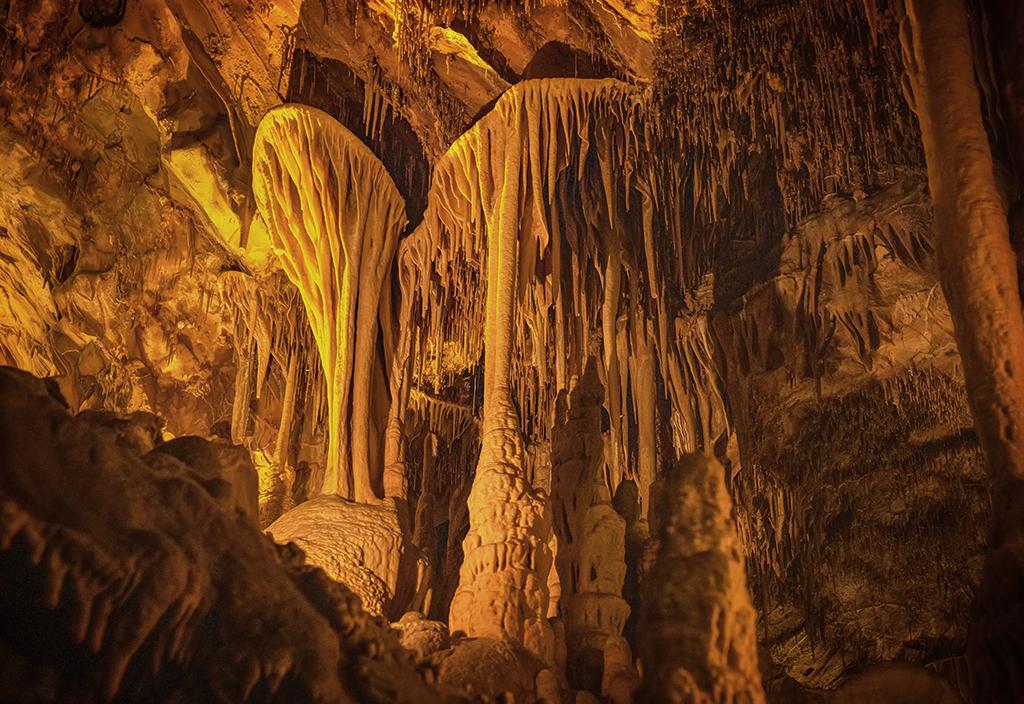The discovery of Lehman Caves led to the eventual establishment of Great Basin National Park in Nevada. Before there was a national park, however, there was Lehman Caves National Monument.

A computer-generated model of the Lehman Caves passages, Great Basin National Park / NPS file
FYI, the name might be plural (Lehman Caves), but there’s really only one cavern from which a multitude of rooms branch out and/or connect with each other.
Absalom (Ab) Lehman – prospector, successful businessman, rancher, and politician – discovered the cavern on his property next to his home around 1883. Ever the entrepreneur, Ab began leading tours through the caves. He built a ranch near the entrance and planned to develop the caves, but died before ever really getting the chance to do so. The property – and caves – changed hands, eventually coming under administration of the Forest Service. In 1922, President Warren G. Harding proclaimed Lehman Caves a National Monument, which was later transferred from the Forest Service to the purview of the National Park Service in 1933. Between the time the National Monument was incorporated into Great Basin National Park in 1986, entrance and exit tunnels were completed into the cave and electric lights and concrete trails were installed.
Although the Forest Service administered Lehman Caves National Monument, their presence was minimal, allowing cave operators Clarence and Bea Rhodes to essentially do as they pleased, including developing one of the cave rooms as a meeting place for large groups, such as weddings.

Clarence and Beatrice Rhodes, managers of Lehman Caves during the first part of the 20th century, Great Basin National Park / Emerson/Daisy Gonder
Quite a bit has changed, since then. For instance, weddings are no longer held in the caves, but tours are still offered, and no visit to Great Basin National Park is complete without taking one or more of the tours. Just be aware that for 2025, all tours are currently first-come, first-served and you will need to visit the Lehman Caves Visitor Center's information desk to find out what tours/tour times are available for that day.

Cave shields (aka cave parachutes) and other speleothems in Lehman Caves, Great Basin National Park / Rebecca Latson

The Inscription Room is filled with signatures of early-20th-century tourists to Lehman Caves, Great Basin National Park / Rebecca Latson
Just how did Lehman Caves form? According to Louise Hose's 2018 "The Geologic Story of Lehman Caves,” there were four phases to the creation of the caves:
- The limestone (Pole Canyon Limestone) comprising Lehman Caves formed, beginning some 550 million years ago when shell life lived, died, and were layered in a shallow sea. The mineral calcium comprised the shell life which later formed limestone.
- The mountain building Forming the range parts of the basin and range landscape created many fractures in the limestone. Warm, acidic acid (sort of like vinegar) infiltrated these fractures and dissolved the limestone to form passages and rooms.
- Water dripping into these voids deposited calcium carbonate to ultimately form the many speleothems (cave formations) seen during a tour of the caves: stalagtites, stalagmites, cave shields, cave turnips, flowstone, etc.
- Finally, a recently-discovered process known as “condensation corrosion” occurred which is still ongoing: “Air, seasonally high in carbon dioxide, dissolving away speleothems and marble. This process may only have started within the last ten thousand years, as the climate got drier.”
Here are a few fun facts about Great Basin caves:
- The temperature year-round in Lehman Caves is a nice (but humid), cool 52oF (11oC). If you take a tour, wear a light jacket or long-sleeved top.
- Great Basin contains 40 known caves (Lehman Caves is the only one open to the public).
- At over 2 miles (3.2 km) in length, Lehman Caves is the longest cave in Nevada.
- Over 10 species new to science have been found in caves at Great Basin National Park.
If you are unable to snag a tour spot for Lehman Caves, you can still take a virtual tour.
Click here to read more about the history of Lehman Caves when it was a National Monument.





